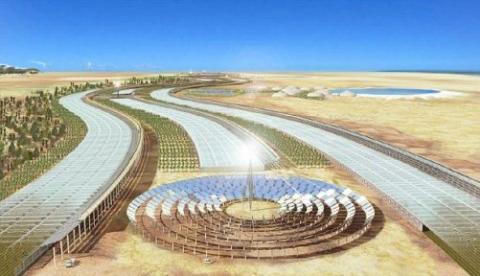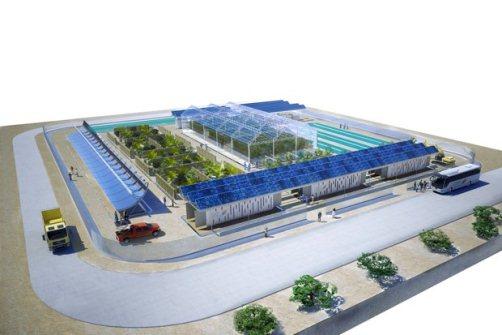Sahara Forest Project pilot to be built in Qatar
Now financed by Yara International ASA and the Qatar Fertiliser Company (QAFCO), the pilot project could be up and running by the end of the year. This means, it will be ready for visitors during the COP 18 Climate Change talks taking place in Doha from late November.
Within the complex, researchers will trial technologies that "allow for the production of food, water and energy in a system that removes carbon dioxide from the atmosphere -- a truly carbon negative solution", explain the founders.
The technologies on test include a concentrated solar power plant (CSP), which uses mirrors to "concentrate the energy from the sun" to create high enough temperatures to super-heat steam. This is coupled with a saltwater cooling system so that the waste heat from the CSP process is dissipated using the roofs of the greenhouses in the complex.
It is this saltwater that is at the heart of the project. The founders explain: "Evaporation of the saltwater at the greenhouse entrance cools and humidifies the dry desert air, creating conditions in the greenhouse that significantly reduce the irrigation requirements of the high value plants grown inside." Co-founder Pawlyn added to Wired.co.uk that the pilot scheme is being built close to the sea. However, if the larger project goes ahead, the cost of a sea pipe could be easily balanced out by the economic benefits of food production.
Outside of the greenhouses, the researchers are to build evaporative "hedges", which the wastewater coming from the greenhouses will be passed over. It is estimated that this water will have a 15 percent salinity, which will increase after this evaporation process -- all with the aim of extracting the minerals out of the brine water. However, the hedges will also shelter food and fodder crops.
The saltwater will also be used to cultivate halophytes or sea-loving plant species as well as algae, which could be used for large-scale bio-energy production. The project team explains: "In the Sahara Forest Project, not only can an algae facility use the same saltwater infrastructure -- it can use the same saltwater. Much of the outflow from an algae facility is still at salinities of only five or six percent, such that it can be reused in the greenhouses, for CSP cooling, and throughout the rest of the system."
Pawlyn and his co-founders insist that the project is "not too good to be true". He added to Wired.co.uk: "The key innovation is the way that these synergies are created so that overall the project is more efficient than the individual technologies would be by themselves and we can move towards a zero waste way of operating."
By Katie Scott


